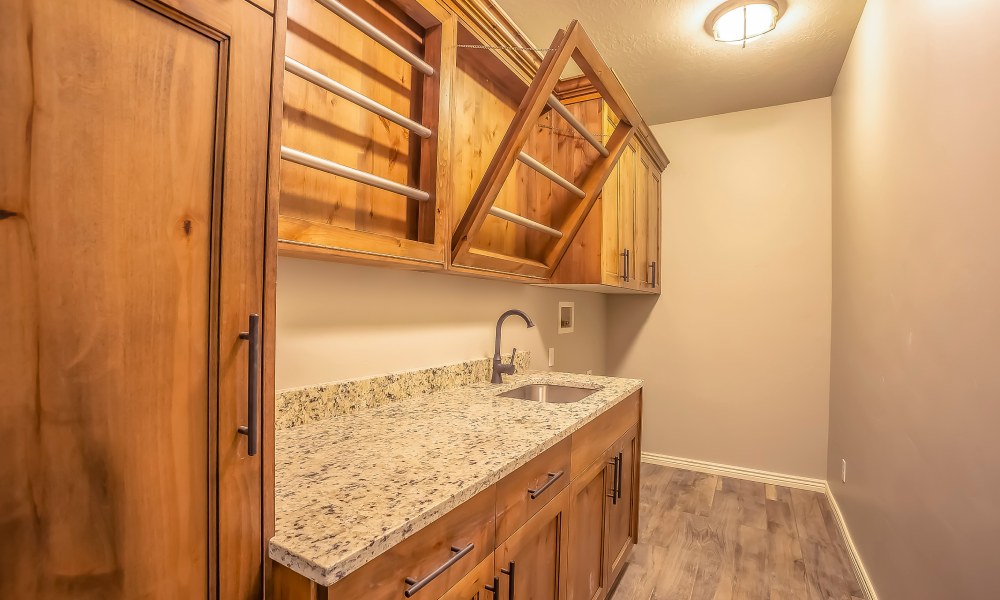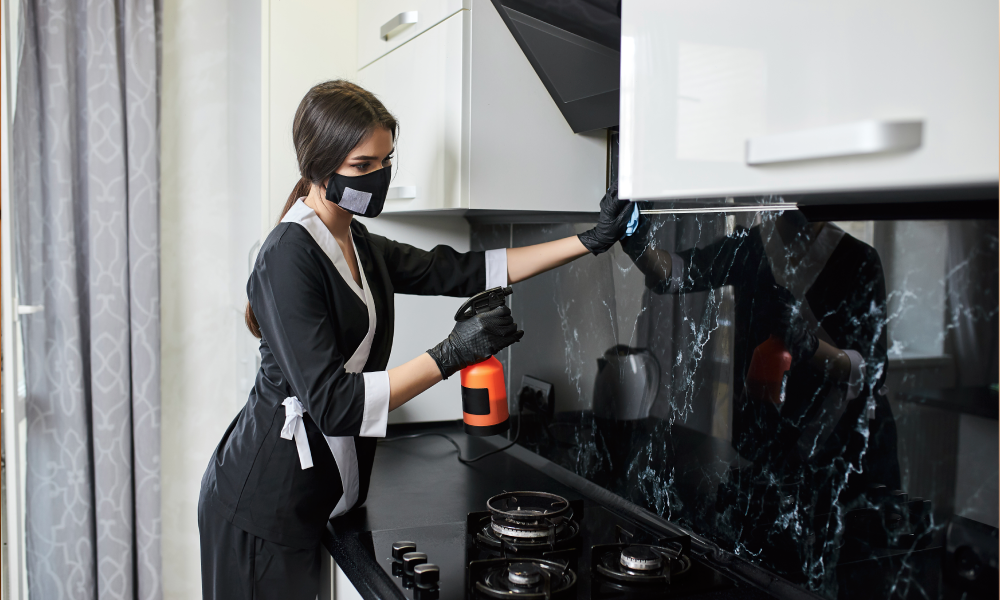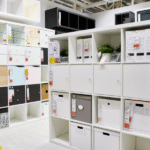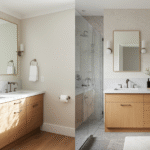
How to Maintain and Clean Your Custom Wood Cabinets
Oct 10, 2025
Custom kitchen cabinets are a piece of art within themselves. Cabinet makers design them after years of dedication towards their craft, and to say these look far, far better than generic options in the market would be an understatement. However, in order to maintain their beauty, they must be maintained, and in order to maintain them right, knowledge of the “do’s and don’ts” is a necessity.
You certainly don’t want to accidentally strip the finish or warp the wood, which is a real risk if you use the wrong products. Let’s talk about the best way to care for your beloved woodwork, keeping it pristine without a lot of hassle.
The Daily Habit: Gentle, Consistent Cleaning
Arguably, the single best thing you can do for your kitchen cabinets, unsurprisingly, is cleaning them on the regular. Naturally, they’re exposed to grease, cooking residue, dust, and a lot more in the kitchen premises which tend to build up over time.
Once that grime has hardened, it becomes much harder to remove, making a deep clean a real chore. However, with regular cleaning, that doesn’t happen.
Your Simple Cleaning Solution
The wrong kind of chemicals or products can result in doing more damage than good. You don’t need anything fancy, and in fact, thankfully, most of what you need is already in your pantry.
Mild Dish Soap and Warm Water: This is your best friend. Mix just a few drops of a gentle dish soap with warm water in a bowl.
Application is Key: Dip a soft, clean cloth, like a microfiber towel, into the solution and wring it out very well. You want the cloth damp, not soaking wet. Water is the enemy of wood if it seeps into seams or edges.
Wipe with the Grain: Always wipe the wood in the direction of the grain. This cleans more effectively and avoids creating streaks or scratches across the finish.
Immediate Drying is Essential: After wiping with your cleaning solution, immediately follow up with a separate, clean, and dry cloth. Never let water or cleaner air dry on the cabinet surface.
Make this a weekly routine and you’re good to go.
Tackling Stubborn Grease and Grime
Sometimes, especially for the cabinets that are right above your stove, the grease build is heavier which calls for a stronger approach, a gentle one just won’t cut it. If nothing works, hire a professional for the task.
However, as a general rule of thumb, if you’re having far too much difficulty cleaning your kitchen, it might be one of the signs it’s time to upgrade your kitchen cabinets.

The Power of a Tested Degreaser
For those spots that just refuse to go, you’ll need a specialized, wood-safe cleaner such as Murphy Oil Soap. Whichever wood cleaner you may choose, ensure it is designed specifically for wood and contains no silicone, wax, or ammonia. If you prefer DIY routes that you can take, create a solution: equal parts white vinegar and water can cut through grease. However, since vinegar is acidic, use it sparingly and test it on a hidden area first, as some finishes may be sensitive. After cleaning, wipe it immediately.
For crevices or detailed trim work, use an old, soft toothbrush dipped in your chosen cleaner. Scrub gently, then wipe and dry the area immediately.
What to Absolutely AVOID
Sometimes, knowing what not to do is as important as knowing what to do. As we stated above, certain cleaners are certain disasters for the finish cabinet makers worked so hard to get. Here are things you need to avoid.
- Harsh abrasives such as steel wool, rough sponges, scrubbing pads, and anything that can scratch the finish, really.
- Acidic cleaners that contain undiluted vinegar, lemon juice, and/or citrus oils
- Ammonia and bleach
- Silicone or oil-based waxes, for they can build up over time and create a sticky residue that attracts dust and makes the surface look dull
- Naturally, wood and water aren’t great friends, so don’t allow water to puddle or soak into the wood, for it’ll cause swelling, warping, and other damages which are, put simply, irreversible.
Long-Term Maintenance for Lasting Beauty
Caring for your custom kitchen cabinets is more than simply wiping them down every couple of weeks. Imagine if we only cleaned our cars and expected them to work well; it takes a lot more effort.
For our cabinets, you need to make sure there is proper ventilation in the room, especially when boiling water or frying. Your appliances must face away from the cabinet fronts and bottoms as their steam can be dangerous. Periodically, it is recommended to inspect and gently tighten the screws on handles, pulls, and hinges. Loose hardware stresses the wood around the fasteners and can lead to damage over time. Finally, and this is optional but we do encourage it, if your finish is starting to look dull, consider a silicone-free, high-quality wood polish designed to restore luster and protect the wood. Apply sparingly with a soft cloth and buff following the wood grain.
Conclusion
Maintaining your high-end kitchen cabinets doesn’t have to be complicated. By sticking to a gentle cleaning routine, wiping up spills immediately, and strictly avoiding harsh chemicals, you will preserve the integrity and beauty of the wood. This consistent, simple care ensures that the fine work of your original cabinet makers will continue to impress for decades to come.
Frequently Asked Questions
Should I clean the inside of the cabinets, too?
Yes, absolutely! Vacuum out crumbs and dust every few months. Wipe down the interior surfaces with your mild soap and water solution, but make sure to dry them thoroughly before putting items back in.
Can I use a baking soda paste on my wood cabinets for tough spots?
It is generally advised to avoid baking soda on the cabinet surface, as it is an abrasive and alkaline compound that can potentially scratch the finish or be corrosive to the wood. Stick to dish soap or wood-specific degreasers for the outside.
How do I remove scuff marks from the wood?
For light scuffs, you can sometimes use a small amount of olive oil on a soft cloth to gently buff the area. The oil helps dissolve the stain and can restore a little shine. For deeper issues, consult your cabinet makers for a touch-up kit that matches your specific finish.




